NASA has posted a series of pairs of satellite images that show a range of changes around the world. They’re great for illustrating human-environment interactions; some of the changes are directly human-caused, while others, while others show the changing consequences of floods and fires as our settlement and agricultural patterns change.
For those of us living in Las Vegas, these images of the shrinking Lake Mead reservoir, which provides water and electricity, is not reassuring. The reservoir has gotten smaller due to multiple factors, including a long-term drought and more water being taken from the Colorado River upstream:
Deforestation in Niger, as land has increasingly been turned over to agriculture:
Here, we see increasing urban growth around Denver International Airport, which now takes up 53 square miles of what used to be farmland:
Algal blooms due to agricultural and household runoff into Lake Atitlan, Guatemala:
Changes to the Sonoran coastline in Mexico due to shrimp farming:
The dramatic shrinking of the Aral Sea, largely due to the amount of water taken out of rivers for irrigation:
The full set of 167 paired images is really striking, and if viewed in the “all images” layout, you can select among various topics, focusing on cities, water, human impacts, and so on.

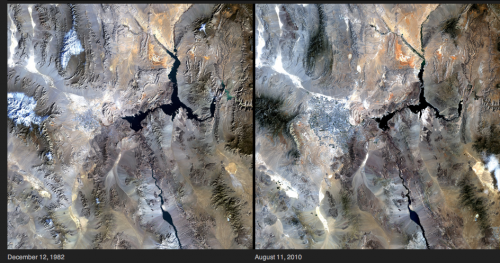
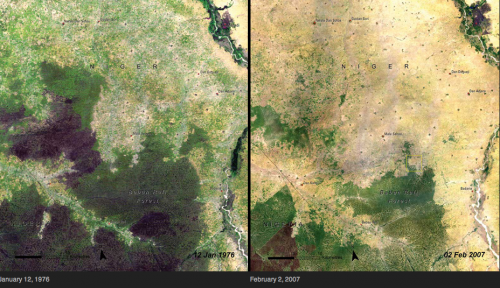
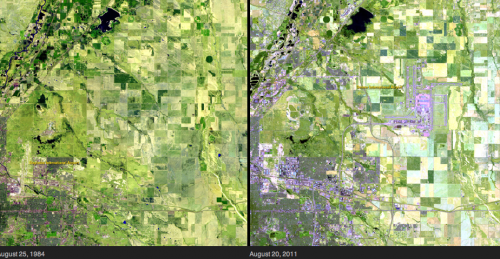
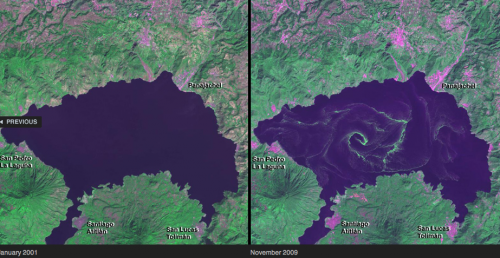
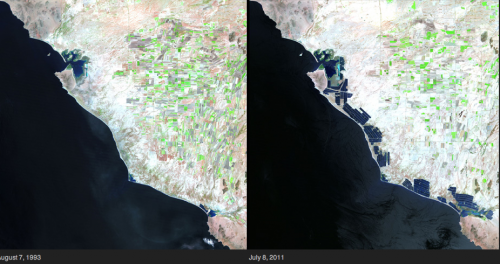
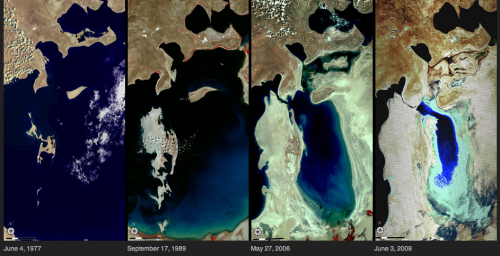
Comments 4
Umlud — April 30, 2012
An interesting thing about the Aral Sea photography. The satellite photos of the Aral Sea began as part of a strategic spying program by the US, since there used to be a nuclear launch site in the region, as well as a biological weapons research facility on one of the islands (now a peninsula). It's because of those satellite images (and their declassification in the 1990s) that we have photographic (as opposed to only cartographic) evidence of the degree and rate of those losses. So, thanks (?) to the Cold War spying, we now have a decent photographic time sequence of the loss of the region's inland sea.
AFAIK, the biological weapons research facility is now closed, but there is major contamination in the region. Too, the nuclear launch site is no longer operational.
NASA Photos of a Changing World | Environmental, Health and Safety News — May 2, 2012
[...] socimages - NASA has posted a series of pairs of satellite images that show a range of changes around the world. They’re great for illustrating human-environment interactions; some of the changes are directly human-caused, while others, while others show the changing consequences of floods and fires as our settlement and agricultural patterns change. [...]
Popielica — May 2, 2012
regarding the Aral, fortunately there has been an inversion of the phenomenon in the latest years: now the Aral is slightly bigger than it was in 2009... let's hope it's not the end of it
Thower — December 27, 2020
Recently, our planet has been suffering very much at the hands of humanity, and this problem needs to be urgently addressed before it is too late. I would like to draw your attention to the fact that for many years deforestation has been a threat to the entire world community. If you are interested in this topic, then visit https://thefoxmagazine.com/dreaming-bigger/understanding-deforestation-and-the-value-of-nature/ and find out more about it. I am very pleased that today more and more people care about the environment, I believe that it is necessary to take measures to reduce the adverse effects of deforestation.